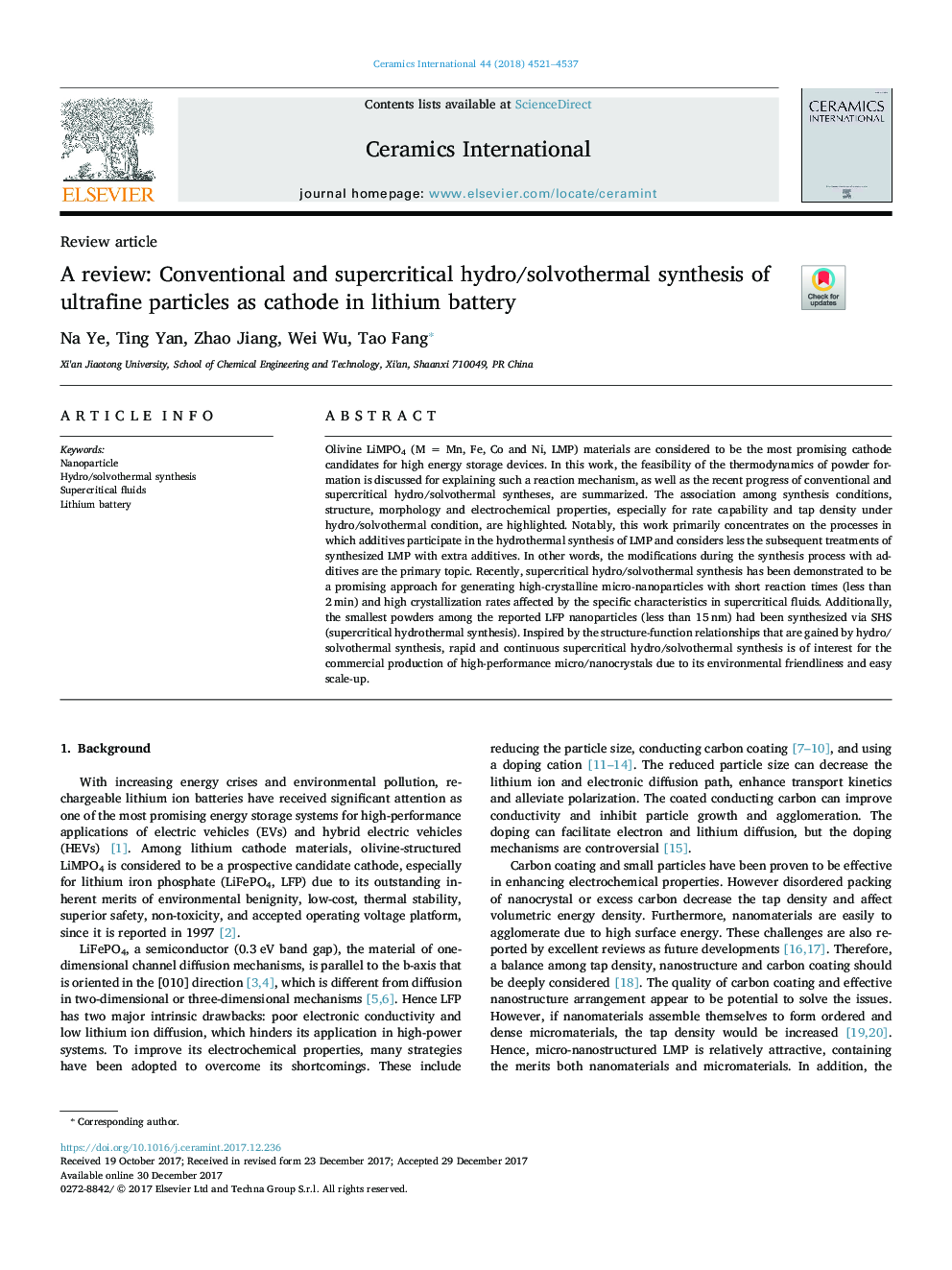| Article ID | Journal | Published Year | Pages | File Type |
|---|---|---|---|---|
| 7887958 | Ceramics International | 2018 | 17 Pages |
Abstract
Olivine LiMPO4 (M = Mn, Fe, Co and Ni, LMP) materials are considered to be the most promising cathode candidates for high energy storage devices. In this work, the feasibility of the thermodynamics of powder formation is discussed for explaining such a reaction mechanism, as well as the recent progress of conventional and supercritical hydro/solvothermal syntheses, are summarized. The association among synthesis conditions, structure, morphology and electrochemical properties, especially for rate capability and tap density under hydro/solvothermal condition, are highlighted. Notably, this work primarily concentrates on the processes in which additives participate in the hydrothermal synthesis of LMP and considers less the subsequent treatments of synthesized LMP with extra additives. In other words, the modifications during the synthesis process with additives are the primary topic. Recently, supercritical hydro/solvothermal synthesis has been demonstrated to be a promising approach for generating high-crystalline micro-nanoparticles with short reaction times (less than 2Â min) and high crystallization rates affected by the specific characteristics in supercritical fluids. Additionally, the smallest powders among the reported LFP nanoparticles (less than 15Â nm) had been synthesized via SHS (supercritical hydrothermal synthesis). Inspired by the structure-function relationships that are gained by hydro/solvothermal synthesis, rapid and continuous supercritical hydro/solvothermal synthesis is of interest for the commercial production of high-performance micro/nanocrystals due to its environmental friendliness and easy scale-up.
Related Topics
Physical Sciences and Engineering
Materials Science
Ceramics and Composites
Authors
Na Ye, Ting Yan, Zhao Jiang, Wei Wu, Tao Fang,
